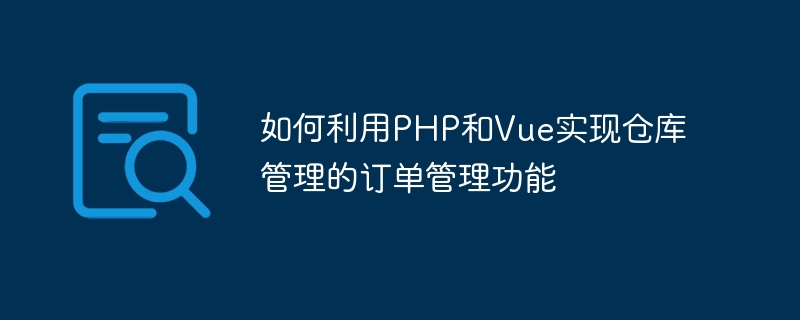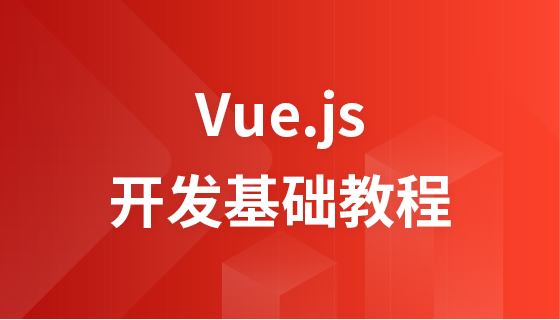
如何利用PHP和Vue實現倉庫管理的訂單管理功能
#概述:
倉庫管理的訂單管理功能是一個非常重要的環節,尤其對於電商平台或零售業來說。在這篇文章中,我們將介紹如何使用PHP和Vue實現訂單管理功能。我們將使用PHP作為後端語言處理資料邏輯,使用Vue作為前端框架處理使用者介面和互動。
環境建置:
在開始之前,確保你已經設定好了PHP和Vue的開發環境。可以使用XAMPP或WAMP軟體包來安裝PHP環境,使用Node.js來安裝Vue環境。
在資料庫中建立這個表,並確保你擁有適當的權限來存取和操作該資料庫。
在這個檔案中,我們將建立以下API路由:
在這些API路由中,我們將使用PHP PDO函式庫來連接資料庫並執行對應的SQL查詢。
以下是一個範例的PHP程式碼,實作了上述API路由:
<?php
header('Content-Type: application/json');
// 连接数据库
$pdo = new PDO('mysql:host=localhost;dbname=your_database','your_username','your_password');
// 获取所有订单
if ($_SERVER['REQUEST_METHOD'] === 'GET') {
$stmt = $pdo->prepare('SELECT * FROM orders');
$stmt->execute();
$orders = $stmt->fetchAll(PDO::FETCH_ASSOC);
echo json_encode($orders);
}
// 添加一个新订单
if ($_SERVER['REQUEST_METHOD'] === 'POST') {
$customerName = $_POST['customer_name'];
$productName = $_POST['product_name'];
$quantity = $_POST['quantity'];
$orderDate = date('Y-m-d H:i:s');
$status = '待支付';
$stmt = $pdo->prepare('INSERT INTO orders (customer_name, product_name, quantity, order_date, status) VALUES (?, ?, ?, ?, ?)');
$stmt->execute([$customerName, $productName, $quantity, $orderDate, $status]);
echo json_encode(['message' => 'Order added successfully']);
}
// 更新一个订单
if ($_SERVER['REQUEST_METHOD'] === 'PUT') {
parse_str(file_get_contents("php://input"), $data);
$orderId = $data['id'];
$status = $data['status'];
$stmt = $pdo->prepare('UPDATE orders SET status = ? WHERE id = ?');
$stmt->execute([$status, $orderId]);
echo json_encode(['message' => 'Order updated successfully']);
}
// 删除一个订单
if ($_SERVER['REQUEST_METHOD'] === 'DELETE') {
parse_str(file_get_contents("php://input"), $data);
$orderId = $data['id'];
$stmt = $pdo->prepare('DELETE FROM orders WHERE id = ?');
$stmt->execute([$orderId]);
echo json_encode(['message' => 'Order deleted successfully']);
}在這個範例中,我們將建立一個名為"Orders.vue"的元件,並在主元件中引入它。
以下是一個範例的Vue程式碼,實作了訂單管理介面:
<template>
<div>
<h1>订单管理</h1>
<form @submit.prevent="addOrder">
<input type="text" v-model="customerName" placeholder="客户姓名">
<input type="text" v-model="productName" placeholder="产品名称">
<input type="number" v-model="quantity" placeholder="数量">
<button type="submit">添加订单</button>
</form>
<ul>
<li v-for="order in orders" :key="order.id">
<span>{{ order.customer_name }}</span>
<span>{{ order.product_name }}</span>
<span>{{ order.quantity }}</span>
<span>{{ order.order_date }}</span>
<span>{{ order.status }}</span>
<button @click="updateOrder(order.id, '已支付')">已支付</button>
<button @click="updateOrder(order.id, '已发货')">已发货</button>
<button @click="deleteOrder(order.id)">删除</button>
</li>
</ul>
</div>
</template>
<script>
import axios from 'axios';
export default {
data() {
return {
orders: [],
customerName: '',
productName: '',
quantity: 0,
};
},
mounted() {
this.getOrders();
},
methods: {
getOrders() {
axios.get('/api/orders/getAll.php')
.then(response => {
this.orders = response.data;
})
.catch(error => {
console.log(error);
});
},
addOrder() {
axios.post('/api/orders/add.php', {
customer_name: this.customerName,
product_name: this.productName,
quantity: this.quantity,
})
.then(response => {
this.customerName = '';
this.productName = '';
this.quantity = 0;
this.getOrders();
})
.catch(error => {
console.log(error);
});
},
updateOrder(orderId, status) {
axios.put('/api/orders/update.php', {
id: orderId,
status: status,
})
.then(response => {
this.getOrders();
})
.catch(error => {
console.log(error);
});
},
deleteOrder(orderId) {
axios.delete('/api/orders/delete.php', {
data: {
id: orderId,
},
})
.then(response => {
this.getOrders();
})
.catch(error => {
console.log(error);
});
},
},
};
</script>以上就是使用PHP和Vue實現倉庫管理的訂單管理功能的範例程式碼。在這個範例中,我們使用PHP作為後端語言處理資料邏輯,並用Vue建立了一個簡單的訂單管理介面。你可以根據自己的需求對程式碼進行修改和擴展。
以上是如何利用PHP和Vue實現倉庫管理的訂單管理功能的詳細內容。更多資訊請關注PHP中文網其他相關文章!

